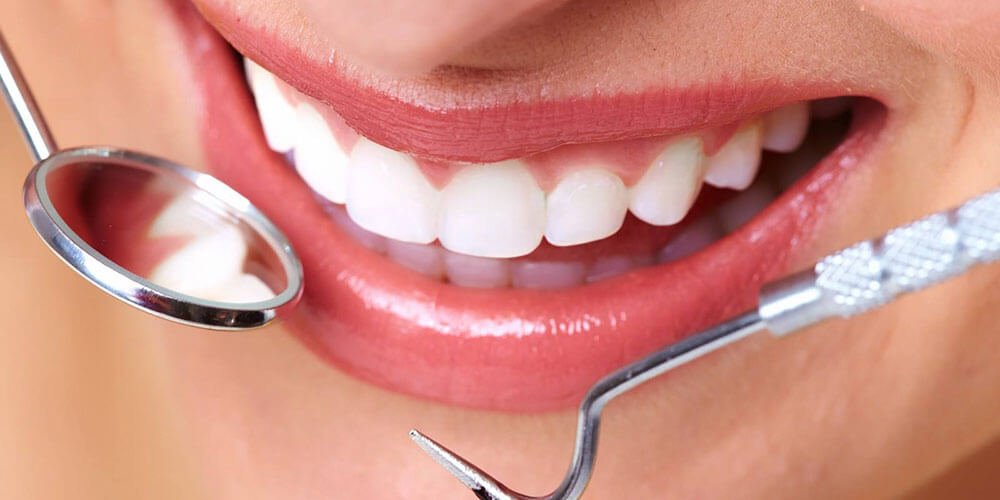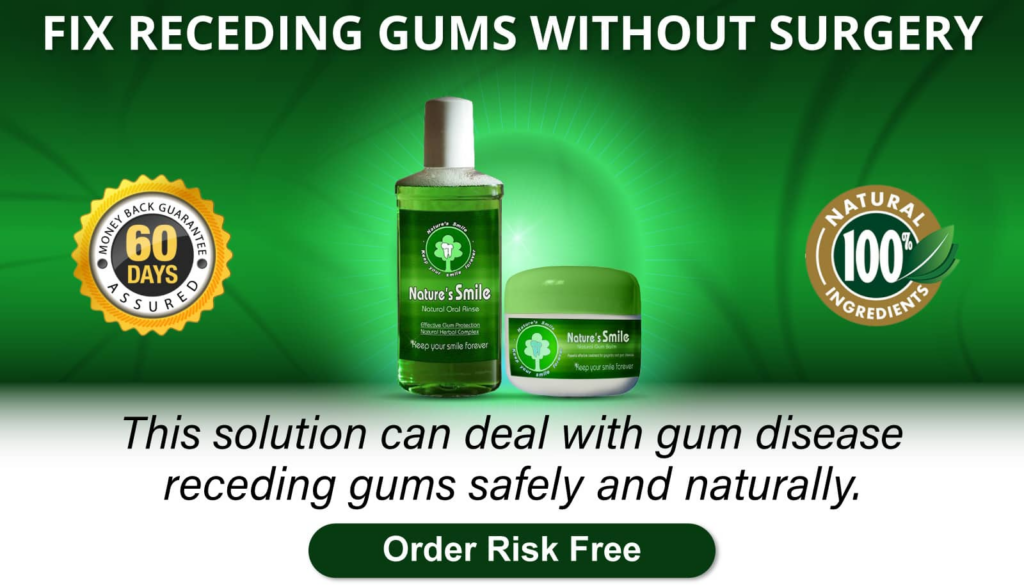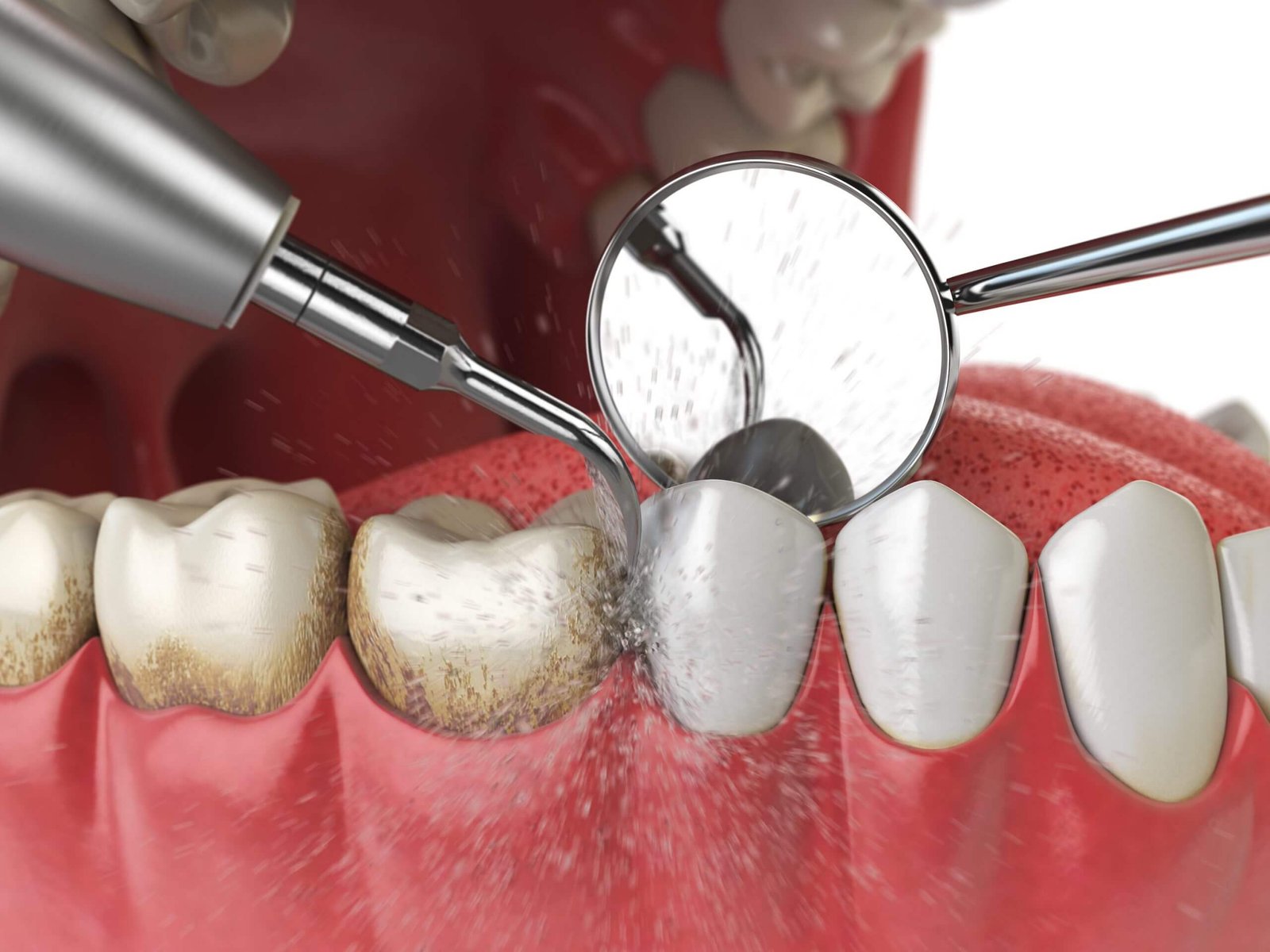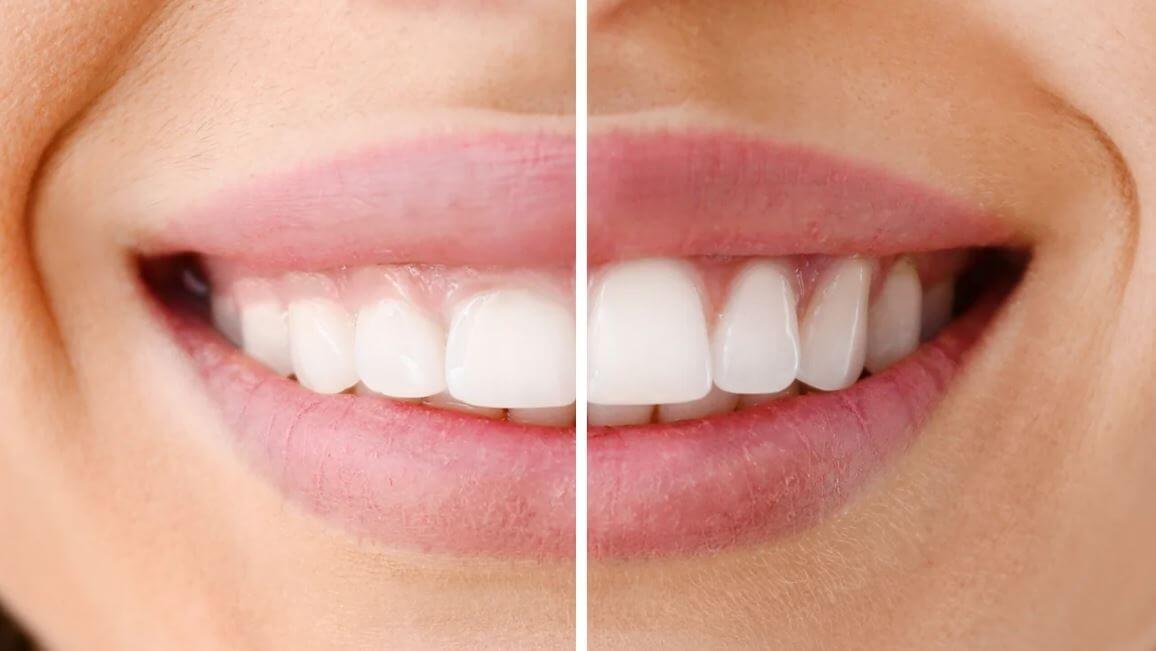Periodontal procedures are critical for maintaining the health of your gums. Gum disease is a common condition that affects many people, and if left untreated, it can lead to serious dental problems. Fortunately, there are several periodontal procedures that can help improve gum line health.
Understanding gum disease is crucial in preventing its progression. It begins with the buildup of plaque on teeth, which eventually leads to inflammation and infection of the gums. This condition is known as gingivitis and is characterized by redness, swelling, and bleeding of the gums. Periodontal procedures for gum line health includes scaling and root planing or laser gum surgery can be performed by a qualified periodontist to treat gum disease effectively. In this article, we will explore some of these periodontal procedures for gum line health in detail so that you can make an informed decision about your oral health care needs.
For advanced gum line health, consider Surgical Gum Line Treatments and specialized periodontal procedures. These interventions address deep-seated issues, like gum recession and periodontitis, fostering improved oral health and preserving the foundation of your smile.
Understanding Gum Disease
The pathogenesis of periodontal disease involves a complex interplay between bacterial colonization and the host response, ultimately resulting in tissue destruction and potential tooth loss. The causes of gum disease are multifactorial, with poor oral hygiene being one of the most significant risk factors. Other factors include tobacco use, genetics, aging, systemic diseases such as diabetes and HIV/AIDS, hormonal changes in women, and certain medications.
Prevention is essential to maintain healthy gums. Brushing twice a day with fluoride toothpaste and flossing daily can remove plaque that builds up on teeth. Regular dental check-ups are also important for professional cleanings to remove tartar buildup that cannot be removed by brushing alone. Avoiding tobacco products, controlling underlying health conditions such as diabetes or HIV/AIDS, and eating a balanced diet can also help prevent gum disease.

Scaling and Root Planing
Scaling and root planing is a non-surgical periodontal therapy that involves the removal of tartar and plaque from the tooth surface. The procedure aims to eliminate bacterial buildup below the gum line, which can lead to gum disease and tooth loss. Aftercare is crucial for maintaining optimal oral hygiene post-scaling and root planing, which may include regular dental checkups, brushing, flossing, and using mouthwash.
Procedure and Benefits
This particular dental intervention, scaling and root planing, has been shown to have a significant impact on the overall condition of oral tissues. This procedure is typically performed by a dental professional and involves the removal of plaque and tartar buildup from below the gum line. The root surfaces are then smoothed out to prevent further buildup and promote healing.
While cost considerations may vary depending on where you live and your insurance coverage, scaling and root planing is generally an affordable option for those looking to improve their gum health. Furthermore, this procedure can help prevent future tooth loss by removing harmful bacteria that can lead to periodontal disease. With proper aftercare and maintenance, scaling and root planing can be an effective way to maintain healthy gums while preventing further damage from occurring.
Aftercare and Maintenance
Effective aftercare and maintenance following scaling and root planing can promote long-term oral health and prevent the need for further interventions. The post-procedure care involves avoiding hard or crunchy foods, smoking, and excessive alcohol consumption for at least 24 hours after the procedure. Patients are also advised to avoid brushing or flossing around the treated area until it has healed completely. Instead, they should rinse their mouth with warm saltwater to help reduce inflammation and promote healing.
Lifestyle changes can also play a vital role in maintaining gum line health. Adopting good oral hygiene practices such as brushing twice daily with fluoride toothpaste, flossing regularly, using an antibacterial mouthwash, and attending regular dental check-ups can significantly improve gum health. Additionally, managing stress levels through exercise or relaxation techniques can help reduce periodontal disease risk factors such as inflammation. With proper aftercare and lifestyle changes, patients can maintain healthy gums long-term without needing further treatment interventions like gum grafting.
https://gumlinehealer.com/periodontal-maintenance/
Gum Grafting
Gum grafting is a surgical technique commonly used in periodontal procedures to treat gum recession. The procedure involves taking tissue from other parts of the mouth, such as the palate or adjacent gums, and transplanting it onto the exposed roots of teeth. This can help improve esthetics, prevent further recession and reduce sensitivity.
There are different techniques for gum grafting including connective tissue grafts, free gingival grafts, and pedicle grafts. Connective tissue grafts involve taking a small piece of subepithelial connective tissue from under the palate and placing it over the exposed root surface. Free gingival grafts involve removing a thin layer of skin from the palate and transplanting it directly onto the recipient site. Pedicle grafts involve rotating nearby healthy gum tissue to cover the exposed root surface.
Donor tissue sources for gum grafting include autograft (from your own body), allograft (from another person) or xenograft (from an animal). Autograft is considered to be most effective due to its compatibility with your immune system while allograft may require additional processing to avoid complications such as disease transmission or rejection. With advancements in technology, newer methods are being developed that use growth factors or stem cells to enhance healing and improve outcomes. In contrast to traditional surgery techniques, laser gum surgery offers a less invasive alternative with minimal bleeding and faster recovery times.
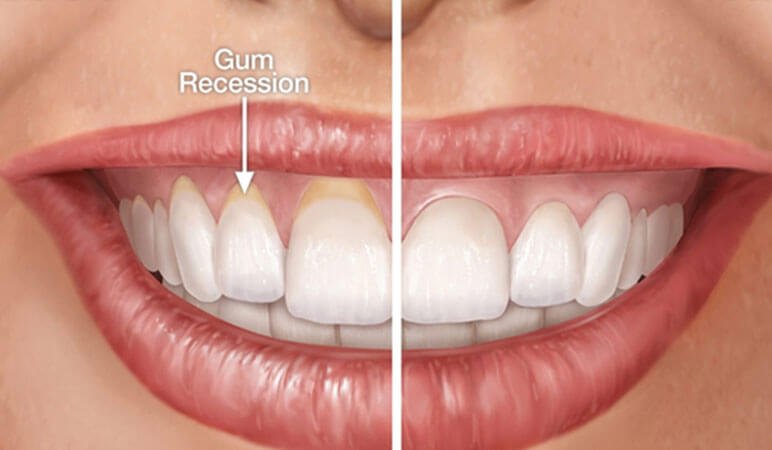
Laser Gum Surgery
Laser gum surgery is a minimally invasive procedure that utilizes laser technology to treat various gum diseases. The laser energy effectively removes diseased tissue while simultaneously sterilizing the area, promoting faster healing and reducing pain and discomfort. Although it offers many benefits such as less bleeding, swelling, and post-operative pain compared to traditional surgery, there are also potential risks involved such as damage to adjacent teeth or nerves if not performed by a properly trained periodontist.
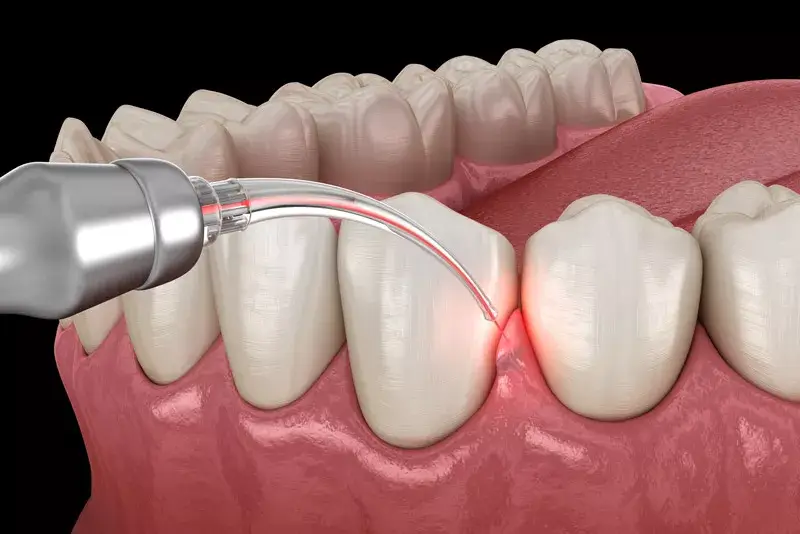
How It Works
This section outlines the mechanism behind laser gum surgery, which is a popular method of treatment for improving the condition of soft tissue surrounding teeth. Laser gum surgery is a minimally invasive procedure that involves using a specialized laser to remove diseased or damaged tissue from around the teeth. The laser energy targets and removes only the affected tissue, leaving healthy tissue intact. This precision allows for more accurate removal of diseased tissue and better preservation of healthy gums.
During laser gum surgery, the dentist uses a dental laser to precisely target and remove diseased or damaged gum tissue. The laser energy cauterizes as it cuts, minimizing bleeding and reducing post-operative discomfort. Because there is less cutting involved than in traditional gum surgery, patients typically experience less pain and swelling after their procedure. However, as with any medical treatment, there are both benefits and risks associated with laser gum surgery that should be considered before deciding if it is right for you.
Benefits and Risks
The benefits and risks of laser gum surgery are important considerations for those seeking a minimally invasive treatment option to improve the condition of their soft tissue surrounding teeth. One of the main pros of laser gum surgery is that it is less invasive than traditional surgery, which means that patients experience less pain and discomfort during the recovery process. Additionally, because laser gum surgery is more precise than traditional methods, patients often experience better results with fewer side effects.
However, as with any medical procedure, there are also potential drawbacks to consider before opting for laser gum surgery. Some cons include the fact that not all patients are good candidates for this type of procedure, and success rates can vary depending on factors such as the extent of the patient’s condition and their overall health. Additionally, while laser gum surgery has been shown to have a high success rate in many cases, there is still a risk of complications such as infection or prolonged bleeding. Despite these potential risks, many patients have found that laser gum surgery provides an effective solution for improving their oral health.
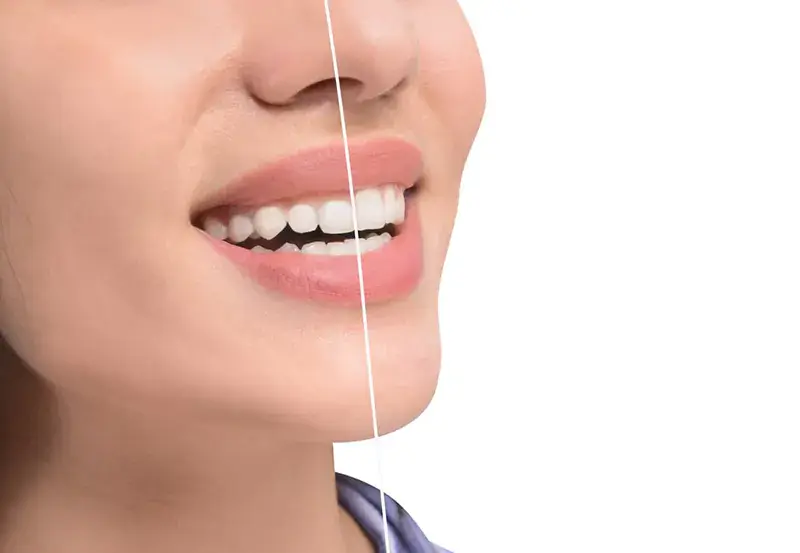
Crown Lengthening
Crown lengthening is a dental procedure aimed at improving the appearance of a patient’s smile. It involves removing excess gum tissue to expose more of the tooth structure, creating a longer crown. Indications for this procedure include aesthetic concerns, such as short teeth or gummy smiles, but it can also be beneficial in cases where there is not enough tooth structure exposed for a restoration or to treat periodontal disease. The recovery process typically involves some discomfort and swelling, but patients can resume normal activities within a few days post-procedure with proper care and follow-up visits with their dentist.

Indications and Benefits
Improving the condition of soft tissue surrounding teeth through intervention has been shown to yield positive outcomes for patients. Crown lengthening is a periodontal procedure that involves removing excess gum tissue to expose more of the tooth’s surface area. This procedure is often indicated for patients who have excessive gum tissue that covers too much of their teeth, making them appear shorter than they actually are. It can also be used as a preventative measure to maintain healthy gums and prevent gingivitis or other forms of periodontal disease from developing.
Crown lengthening offers several benefits, including improving the appearance of teeth by creating a more proportional gum-to-tooth ratio. This can help boost self-confidence and self-esteem in patients who may feel self-conscious about their smile due to excessive gum tissue. Additionally, crown lengthening can make it easier for dentists to perform dental procedures such as placing crowns or veneers on the affected teeth. Patients typically experience minimal discomfort during the recovery process and can return to normal activities within a few days after the procedure.
Procedure and Recovery
This section will explore the steps involved in crown lengthening surgery, as well as the expected recovery process for patients. Before undergoing the procedure, preparation is necessary to ensure maximum effectiveness and minimize complications. Patients are advised to maintain good oral hygiene by brushing twice daily and flossing regularly. A consultation with a periodontist is also recommended to discuss the specifics of the surgery, including its purpose and potential risks.
During the procedure itself, local anesthesia is applied to numb the area before an incision is made along the gum line. The periodontist then removes excess gum tissue or bone to expose more of the tooth’s surface. Once completed, sutures are used to close up any wounds left behind. Following crown lengthening surgery, post-operative care is essential for optimal healing and minimal discomfort. This typically includes rest and avoiding strenuous activities for several days after surgery. Patients should also avoid smoking or consuming alcohol during this time as it can slow down healing processes.
Dental Implants
Dental implants offer a durable and reliable solution for replacing missing teeth, providing patients with improved oral function and aesthetics. Implants are made of titanium or zirconia and inserted into the jawbone to support a prosthetic tooth. The implant fuses with the bone over time, creating a stable foundation for the restoration.
Implants can last a lifetime if properly cared for through implant maintenance. Patients should brush and floss their implants just like natural teeth to prevent bacterial buildup that can lead to gum disease or implant failure. Regular dental check-ups are also important to monitor the health of the implant and surrounding tissues. If an implant does fail, it may need replacement, which involves removing the failed implant and placing a new one in its place.
While dental implants are a great option for replacing missing teeth, maintaining gum line health is crucial to their success. Gum disease can cause inflammation around the implant site, leading to bone loss or even implant failure. Proper oral hygiene practices like brushing twice daily, flossing regularly, and using mouthwash can reduce the risk of gum disease development. Additionally, routine dental cleanings by a professional hygienist help remove plaque buildup that cannot be removed at home. By taking care of both their implants and gums, patients can enjoy healthy smiles for years to come.
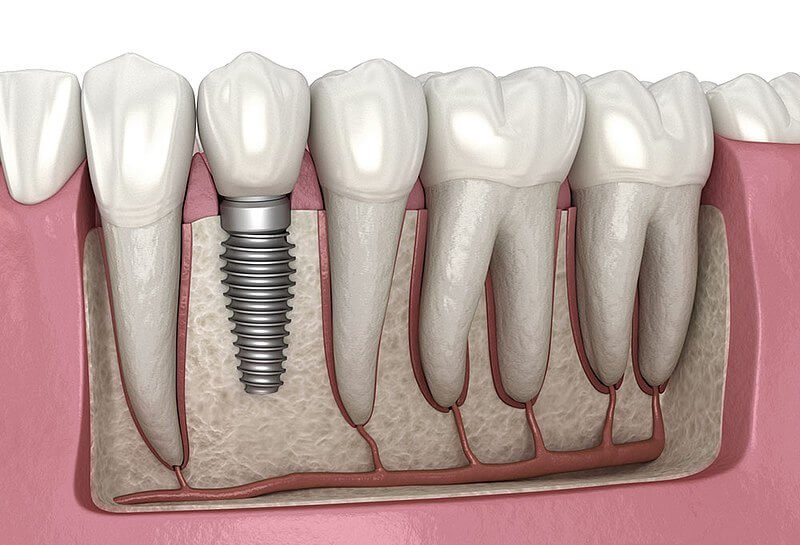
Maintaining Gum Line Health
Maintaining gum line health is crucial for overall oral health. Oral hygiene practices such as brushing and flossing regularly are essential in preventing the buildup of bacteria that can lead to gum disease. Additionally, regular dental checkups allow for early detection and treatment of any issues with the gums before they progress into more serious problems. Adopting these habits can help individuals maintain healthy gums and prevent complications down the line.
Oral Hygiene Practices
Effective oral hygiene practices are essential for promoting overall dental health and preventing the development of oral diseases. Proper brushing and flossing techniques can help remove plaque, a sticky film of bacteria that forms on teeth and gums, which if left unremoved can cause tooth decay and gum disease. Brushing twice a day for at least two minutes using fluoride toothpaste is recommended to clean the surfaces of the teeth. It is important to use gentle circular or back-and-forth motions while brushing to avoid damaging the gums.

Flossing once a day removes plaque and food particles from between teeth where toothbrush bristles cannot reach. It is important to gently glide the floss up and down against each side of every tooth in a C-shape motion, being careful not to snap it into the gums as this can cause bleeding or damage. In addition to proper brushing and flossing techniques, using an antibacterial mouthwash can also help reduce bacteria in the mouth. Regular dental checkups are also necessary for maintaining good oral health and detecting any problems early on before they become more serious issues.
Regular Dental Checkups
Regular visits to the dentist are crucial for the early detection and prevention of potential oral health issues. It is recommended that individuals schedule dental checkups at least twice a year, or more frequently if they have specific concerns or conditions. During these appointments, dentists can perform a thorough examination of the teeth, gums, and mouth to identify any signs of decay, gum disease, or other problems.
In addition to detecting issues early on, regular dental checkups also provide an opportunity for individuals to receive professional cleanings and personalized advice on how to maintain optimal oral hygiene. Dentists can offer guidance on proper brushing and flossing techniques, as well as recommend products that may be beneficial for individual needs. By prioritizing regular dental checkups and following through with recommended treatments and practices, individuals can help ensure their overall oral health and prevent more serious issues from developing in the future. This leads us into the subsequent section about choosing the right periodontist who can provide specialized care for gum line health.

Choosing the Right Periodontist
When it comes to choosing a periodontist, there are several factors to consider. One of the most important is the qualifications and experience of the practitioner. You want to ensure that your periodontist has the necessary training, skills, and expertise to provide you with quality care. Another factor to consider is patient reviews and testimonials. These can give you insight into how satisfied others have been with their experience at a particular practice, which can help inform your decision-making process.
Qualifications and Experience
The qualifications and experience of the dental professional are paramount in ensuring successful outcomes for interventions targeting oral tissues. When it comes to periodontal procedures, it is essential to choose a periodontist who has the necessary qualifications, certifications, experience, training, expertise, and specializations in this field. Referrals from other dental professionals who have worked with them can also help assess their reputation and recommendations.
However, statistics show that choosing the right periodontist is not just about their credentials. Patients’ success rates and satisfaction levels are an equally important factor when selecting a dental professional. According to surveys conducted by healthcare organizations, patients tend to rely heavily on online reviews and testimonials when making decisions regarding medical practitioners. Therefore, it is crucial to consider both objective factors such as qualifications/experience as well as subjective factors like patient feedback when choosing a periodontist for gum line health treatments.
Patient Reviews and Testimonials
Patient reviews and testimonials play a crucial role in the decision-making process for selecting an appropriate dental professional for interventions targeting oral tissues. Patients rely on the experiences of others to determine whether a particular dental practitioner is capable of providing satisfactory periodontal procedures. Positive patient reviews can provide reassurance to potential patients that they are making a good choice by seeking treatment from a particular dental professional. In contrast, negative reviews could lead to hesitation or avoidance of seeking treatment from that same dentist.
An effective way for dental professionals to showcase their expertise and demonstrate patient satisfaction is through success stories shared by patients who have undergone periodontal procedures. Success stories highlight how the intervention has improved the oral health and quality of life of individuals who were once troubled with gum line issues. These stories also serve as powerful marketing tools for dentists, attracting new patients while building trust with existing ones. By sharing positive outcomes achieved through their treatments, dental practitioners can instill confidence in their abilities and establish themselves as experts in periodontal procedures.

Further Entities
- https://en.wikipedia.org/wiki/Dental_laser
- https://www.nidcr.nih.gov/health-info/gum-disease
- https://www.uthscsa.edu/patient-care/dental/services/gum-grafting
Frequently Asked Questions
What is the average recovery time for gum grafting or laser gum surgery?
Recovery duration for gum grafting or laser gum surgery can vary depending on the individual and the extent of the procedure. On average, patients can expect a recovery time of one to two weeks. During this time, post operative care is critical for proper healing. Patients should avoid strenuous activity and follow all instructions provided by their dentist or periodontist. A soft food diet may be necessary for a few days, and regular oral hygiene practices such as brushing and flossing should be resumed gradually under professional guidance. Pain management will also be addressed with medication if necessary. Following all post operative care instructions will help ensure successful healing and optimal results after gum grafting or laser gum surgery.
Can gum disease be prevented with proper oral hygiene alone, or are there other factors at play?
Preventive strategies for gum disease involve a combination of proper oral hygiene practices, as well as lifestyle factors that can contribute to overall health. Brushing twice a day with fluoride toothpaste and flossing daily are essential in removing plaque buildup that leads to gum disease. Additionally, avoiding tobacco products and maintaining a healthy diet can also lower the risk of developing gum disease. While genetics may play a role in susceptibility to gum disease, it is important to note that preventive measures can significantly decrease this risk. Overall, incorporating these preventive strategies into one’s daily routine can greatly improve both oral and overall health.
What are the potential long-term consequences of untreated gum disease?
Untreated gum disease can lead to potential complications that extend beyond the oral cavity and have a significant impact on overall health. Research has shown that untreated gum disease is linked to an increased risk of heart disease, stroke, diabetes, and respiratory infections. In addition, gum disease can cause chronic inflammation in the body which has been associated with other health conditions such as cancer. It is important to recognize the potential long-term consequences of untreated gum disease and take steps to prevent or treat it early on to protect overall health.
Are there any alternative treatments to traditional scaling and root planing for gum disease?
Non-surgical alternatives and herbal remedies have been explored as potential treatments for gum disease. While traditional scaling and root planing have been proven effective, some patients may prefer non-invasive options or seek complementary therapies. One alternative is laser therapy, which uses light energy to remove bacteria and infected tissue from the gums. Another option is ozone therapy, where ozone gas is applied to kill harmful bacteria. Herbal remedies such as tea tree oil, aloe vera, and clove oil have also shown promise in reducing inflammation and promoting gum health. However, it is important to note that research on these alternatives is limited and they should not be considered a substitute for professional periodontal care. It is recommended that patients consult with their dentist or periodontist before trying any non-traditional treatments for gum disease.
How can patients determine if they are at a higher risk for developing gum disease, and what preventative measures can they take?
Identifying high-risk patients for gum disease is crucial in implementing preventative measures. Factors such as genetics, smoking, poor oral hygiene, and certain medical conditions increase the risk of developing gum disease. Patients should be aware of these risk factors and take steps to mitigate them through regular dental checkups, proper brushing and flossing techniques, using antimicrobial mouthwash, and avoiding tobacco products. A healthy diet that is low in sugar can also reduce the risk of gum disease. Implementing these preventative measures can significantly decrease the likelihood of developing gum disease and improve overall oral health.
Conclusion
In conclusion, periodontal procedures are crucial for maintaining healthy gums and preventing gum disease. Scaling and root planing is a common treatment that involves removing plaque and tartar buildup from the teeth and below the gumline. Gum grafting is another procedure that can help restore receding gums by using tissue from other areas of the mouth to cover exposed roots. Laser gum surgery provides a minimally invasive option for treating gum disease, while crown lengthening can improve the appearance of a gummy smile or prepare teeth for dental restorations.

